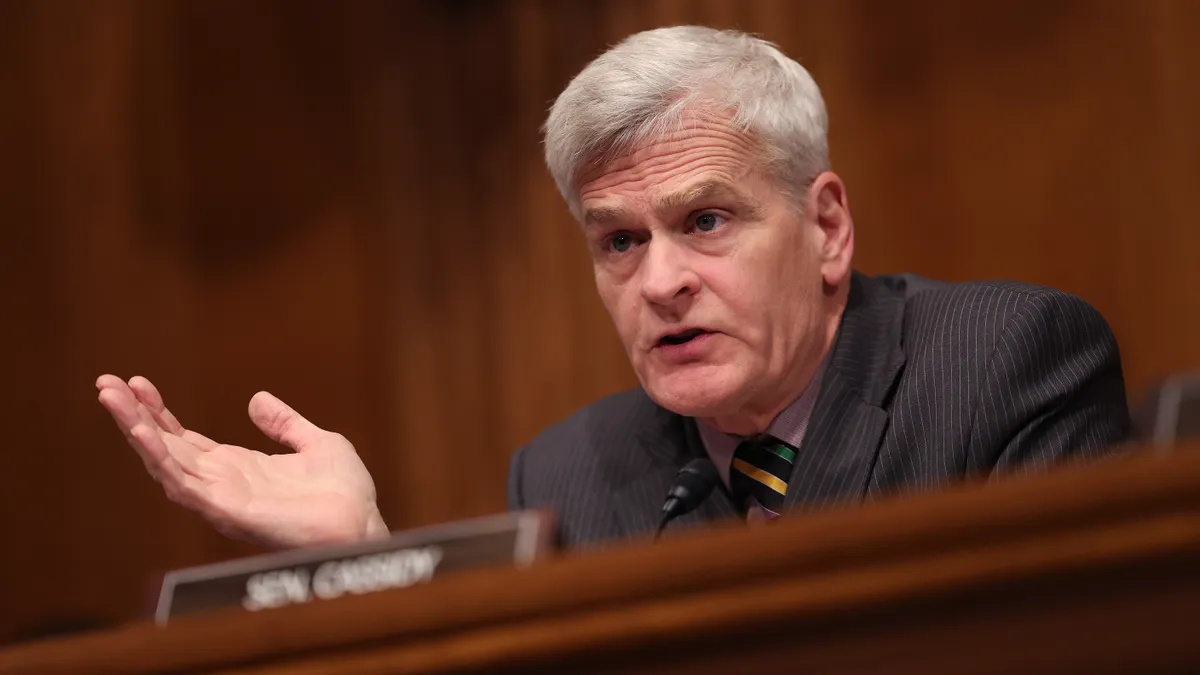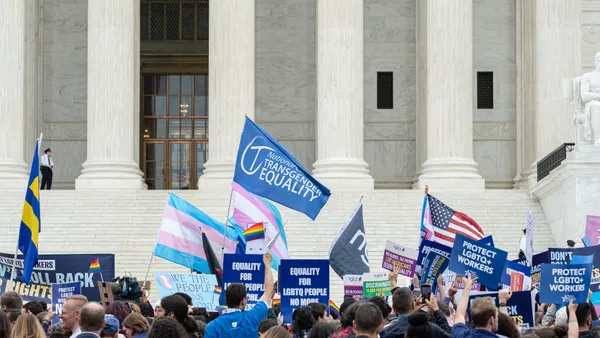Dive Brief:
- Congress should consider statutory approaches to ease independent contractors’ access to employment benefits, Sen. Bill Cassidy, chair of the Senate Committee on Health, Education, Labor and Pensions, proposed in a white paper to the committee.
- Cassidy, R.-La, recommended amending the Employee Retirement Income Security Act to specify that a self-employed individual with no workers is eligible to participate in association health plans; providing more flexibility for the creation of AHPs; making health reimbursement arrangements available to independent workers; and allowing banks to create escrow or suspension accounts to help workers with irregular income save, among other suggestions.
- Cassidy said his proposals seek to help workers who want to be classified as independent contractors more easily access benefits without being seen as employees under the law.
Dive Insight:
In recent years, independent contractor classification has been a major focus for both the U.S. Department of Labor and congressional officials on the HELP committee. The Biden administration’s independent contractor final rule — which uses a “totality of the circumstances” six-factor approach to determine employment status — was one of the few labor rules under the administration to survive judicial review.
While he lamented the “elusive” current state of determining employment status, Cassidy noted that provision of benefits by employers “is certain” to classify workers as employees. As a result, he said, independent contractors often go without health insurance or pay expensive premiums under the Affordable Care Act, and they rarely save for retirement.
To address gaps in healthcare access, Cassidy recommended making association health plans, which allow multiple employers to join and together obtain the benefits associated with coverage in a large group market, more accessible. Under DOL’s interpretation, AHPs currently require those participating to adhere to several requirements, including having a commonality of interest and common geography. Removing such requirements — and specifying that independent contractors are eligible to participate in AHPs — would “open the door to self-employed individuals accessing affordable health coverage,” Cassidy said.
The Trump administration published a rule broadening AHP access in 2018, which the Biden administration subsequently rescinded in 2024 after it saw multiple judicial challenges.
To address a lack of retirement savings, Cassidy suggested making it possible for contracting companies to deposit a portion of independent contractors’ pay into escrow or suspension accounts throughout the year and then transfer to a single employee pension IRA before tax filing, with the excess cash moving into regular bank accounts. Other suggestions included having companies prompt workers to adjust their savings for retirement contributions or auto-enroll them at 2% of base pay while offering flexible contribution options.
Some groups, such as the left-leaning think tank Center on Budget and Policy Priorities, have critiqued AHPs as providing weaker cost and coverage protections than the ACA and increasing costs for sicker members and organizations through market segmentation.
Progressive and conservative groups also tend to clash when it comes to interpreting workers’ desire to be classified as independent contractors; while Cassidy cited Bureau of Labor Statistics data that 80% of independent contractors prefer their classification, progressive think tank Economic Policy Institute has said many low-paying workers are misclassified and lose out on rights and benefits.














